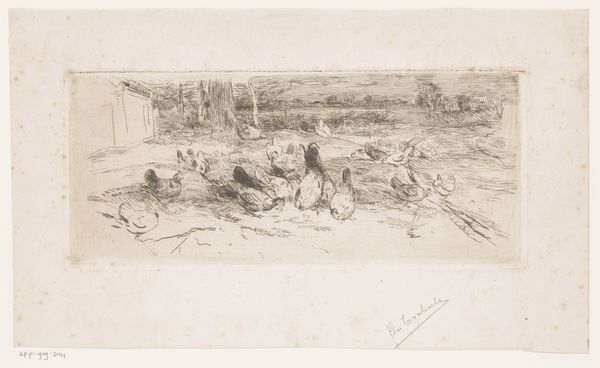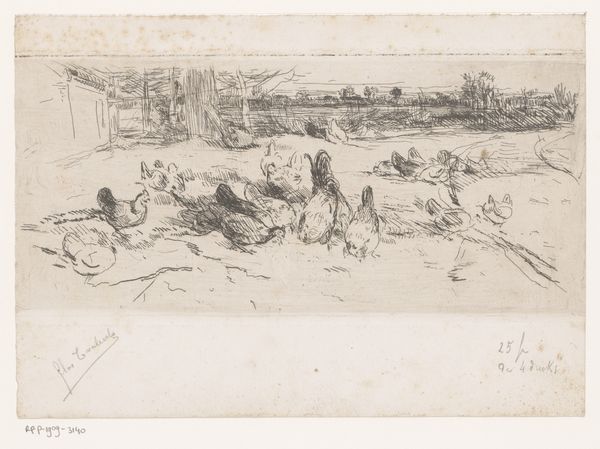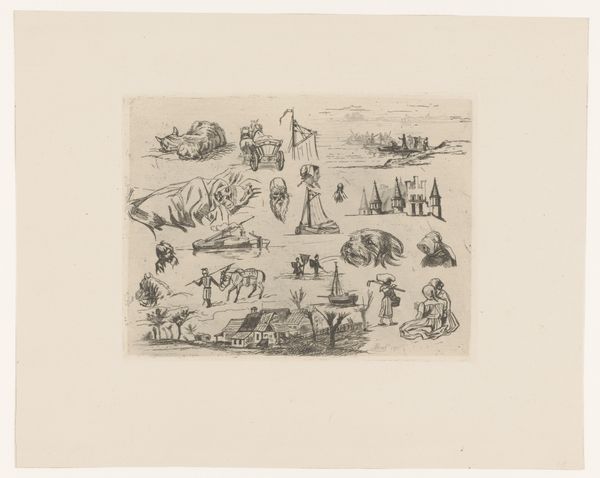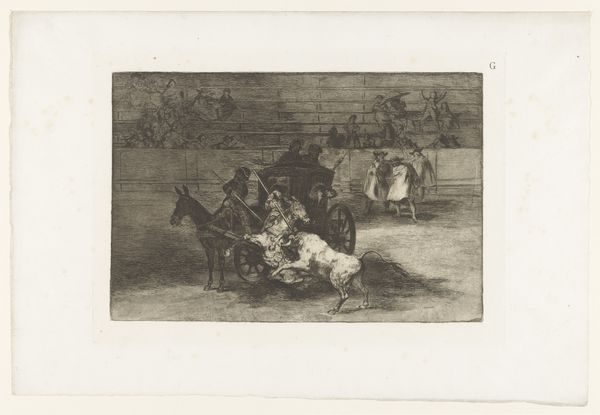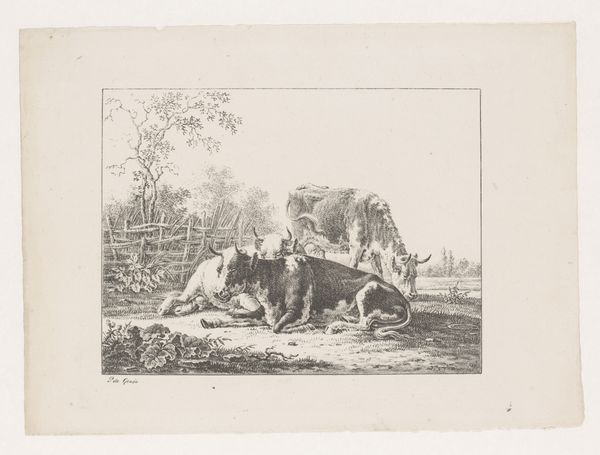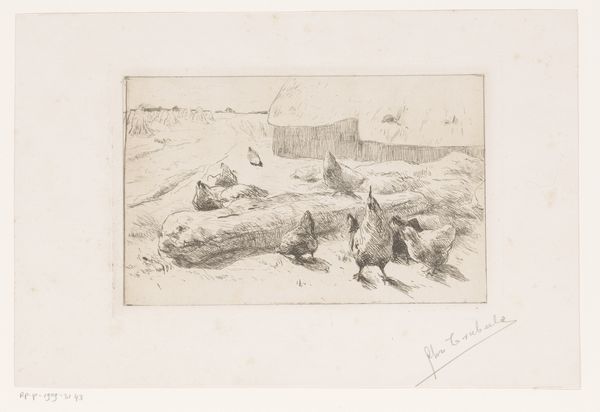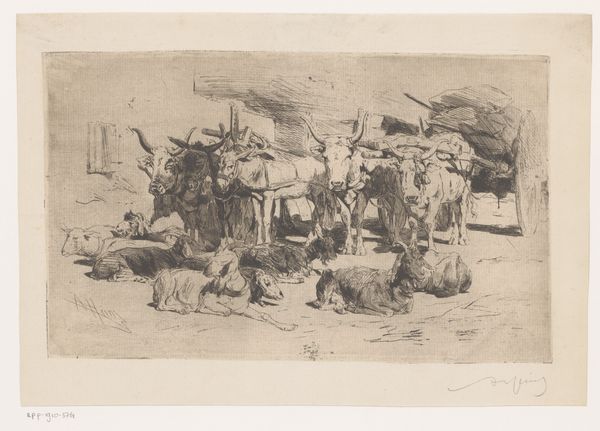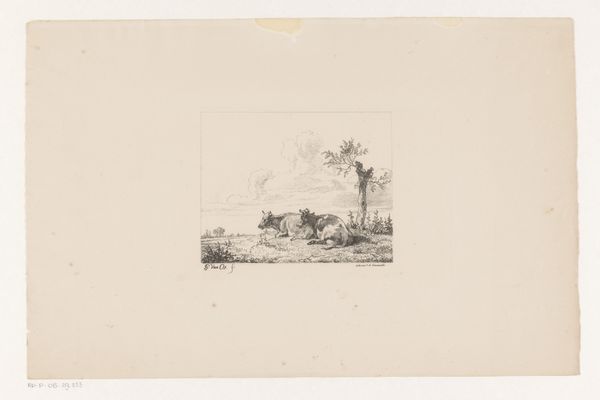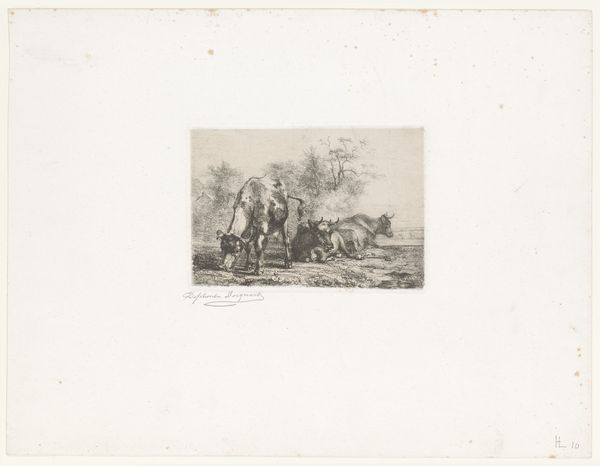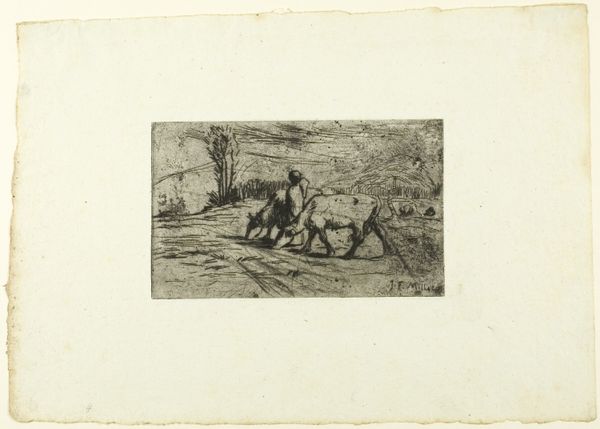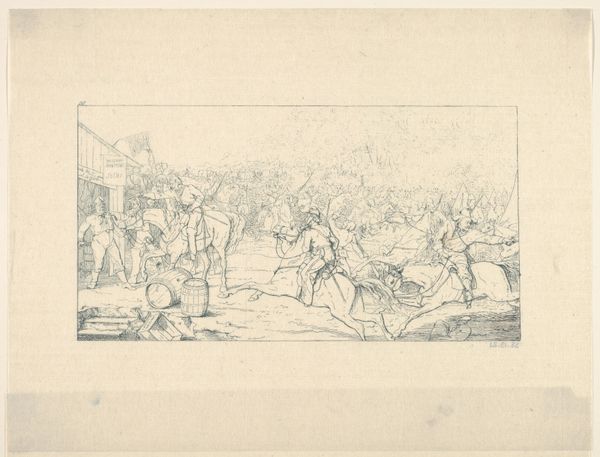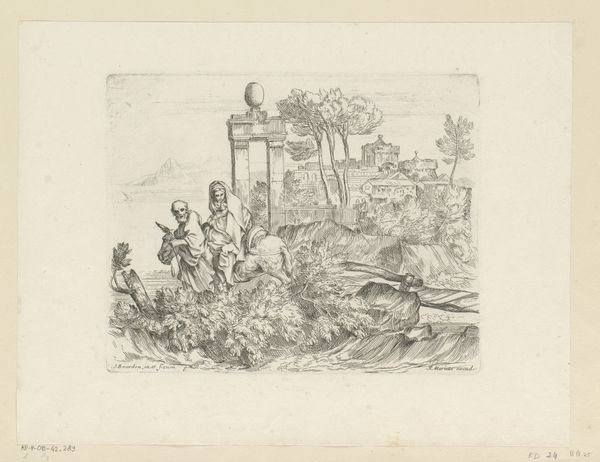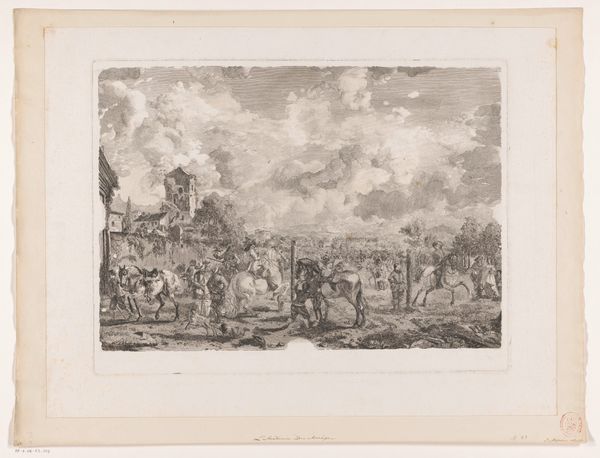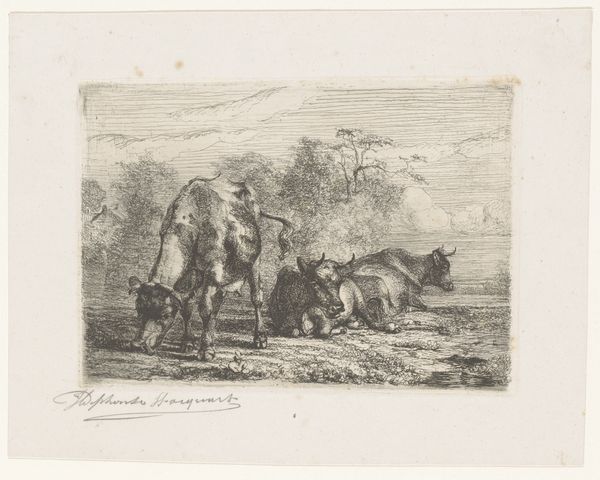
print, etching
# print
#
etching
#
landscape
#
etching
#
folk-art
#
genre-painting
#
realism
Dimensions: height 130 mm, width 300 mm
Copyright: Rijks Museum: Open Domain
Curator: Florent Nicolas Crabeels’ etching, "Chickens in the Grass Along a Road," likely created between 1839 and 1896, presents a bucolic scene of chickens in a farm setting. Editor: The stark monochromatic tones initially give it a somber mood, but upon closer inspection, there's a delightful liveliness in the arrangement of the chickens—they seem so absorbed in their world, unburdened by larger social structures. Curator: Absolutely, it offers a candid depiction of rural life during the late 19th century. This was a period of rapid industrialization and urbanization, and scenes like this served to either reinforce traditional agricultural values or served as nostalgia. The print hints at themes around gender roles within this environment. It can be assumed women are responsible for animal tending, subtly perpetuating specific socio-economic power dynamics within rural families. Editor: Focusing on the chickens as symbolic entities, the repeated form speaks to the ideas of community, the natural cycle, and even vulnerability, given their domestic dependence. Perhaps a commentary on agrarian societies. It's worth asking—did this scene evoke comfort, reminding people of their cultural roots or traditions, or did it inspire introspection about the social dynamics they reinforced? Curator: I find myself questioning how Crabeels, as a man, depicted this presumably everyday scene managed by women. It does make you wonder how the female perspective is lost or modified in historical artwork such as this and if, perhaps, Crabeels' positioning comes across as observational instead of deeply empathetic? Editor: An insightful note! We also can't overlook the recurring motif of enclosed structures on the left, subtly highlighting humanity’s dominion over nature and agricultural systems that are prevalent at that time, but still exist to this day. It begs questions about our intervention in the life cycles depicted here. Curator: And from an activist's perspective, such images must be considered in conjunction with colonialism, global food supply chains and how this simple farm scene is directly influenced by social practices and gender norms. Editor: Quite true, viewing them simply as an artistic genre undermines the significance of its societal commentary. Curator: It truly goes to show how layered a seemingly unassuming depiction of chickens can be! Editor: Indeed. Crabeels gives us more than chickens—visual entry points to deeper cultural and historical dialogues.
Comments
No comments
Be the first to comment and join the conversation on the ultimate creative platform.
